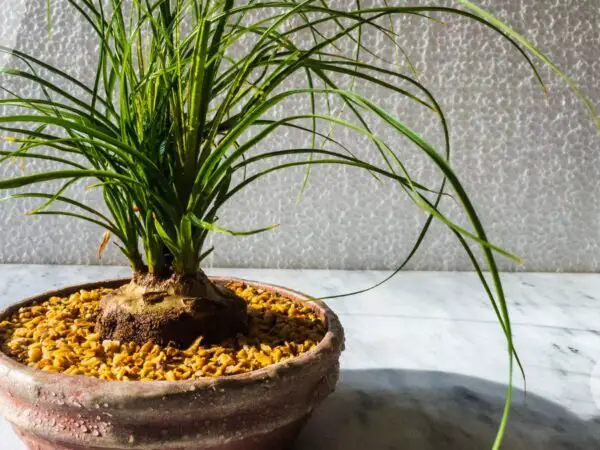
Looking to level up your outdoor plant game? Dive into the world of areca palm care outdoor with our expert tips and tricks. From sunlight needs to watering schedules, weather and potting mix, we've got you covered. Discover the secrets to keeping your areca palm's foliage, leaves, and roots thriving and vibrant in any outdoor space with the right potting mix.
Ready to transform your outdoor oasis? Let's unlock the potential of your areca palm together. Elevate your gardening skills, sow seeds, nurture roots, and create a lush green paradise with vibrant foliage right in your backyard. Say goodbye to wilting leaves and hello to a flourishing, picture-perfect plant!
Key Takeaways
- Understand the light requirements of your Areca Palm; ensure it receives adequate sunlight for healthy growth.
- Choose well-draining soil for your Areca Palm and monitor moisture levels to prevent waterlogging.
- Water your Areca Palm consistently, allowing the top layer of soil to dry out between waterings.
- Maintain appropriate temperature and humidity levels to create a favorable environment for your Areca Palm.
- Feed your Areca Palm with a balanced fertilizer to support its growth and vitality.
- Regularly inspect your Areca Palm for pests and diseases, taking prompt action to prevent infestations.
Understanding Areca Palm
Growth Habits
Areca palms develop multiple stems from the base, adding to their lush appearance. They can reach a mature height of 6-7 ft. indoors and an impressive 15-30 ft. outdoors. The plant blooms with small, bright yellow flowers, enhancing its aesthetic appeal.
Ideal Conditions
Areca palms require high humidity levels for optimal growth, making them perfect for tropical environments. They thrive in rich, slightly acidic soil that provides good drainage for healthy root development. These plants prefer bright, full, or filtered sunlight to flourish.
Seasonal Changes
Adjust the watering frequency of areca palms based on seasonal temperature changes to prevent overwatering or underwatering. During drier seasons, monitor the plant closely for brown leaf tips, indicating a need for more moisture. Adapt the feeding schedule according to seasonal growth patterns to support healthy development.
Light Requirements
Ideal Exposure
Areca palms thrive in full sun conditions, benefiting from ample light exposure for optimal growth. They prefer bright, filtered sunlight that mimics their natural habitat. These plants can also tolerate varying light intensities, making them versatile for different outdoor settings.
Shade Tolerance
While areca palms have limited tolerance to shade, they prefer brighter light conditions to maintain their health and vibrancy. It is crucial to avoid prolonged periods of low light to prevent stunted growth and potential issues with the plant's overall well-being.
Sunlight Adjustment
When transitioning areca palms to direct sunlight, it is essential to acclimate them gradually to prevent sunburn and stress on the plant. Monitoring for signs of sunburn during this adjustment period is crucial for their health. Providing shade during intense midday sun exposure can help protect the plant from excessive heat.
Soil Preferences
Soil Type
Areca palms require rich, well-draining soil to thrive. They do best in slightly acidic soil conditions. It is important to avoid waterlogged or compacted soil to prevent root suffocation.
Drainage Needs
To prevent root rot, areca palms need well-draining soil that allows excess water to escape easily. When planting in pots, ensure they have drainage holes for proper water flow. Avoid standing water around the roots as it can lead to root diseases.
pH Levels
Areca palms prefer a soil pH around 6.0, which is slightly acidic. It is crucial to maintain these slightly acidic soil conditions for the plant's optimal growth and health. Regularly monitor the soil's pH levels to ensure they are within the ideal range for the plant.
Watering Practices
Water Frequency
- Water regularly, allowing slight drying between waterings.
- Adjust watering frequency based on environmental conditions.
- Avoid overwatering to prevent root rot.
Drought Tolerance
- Show moderate tolerance to short periods of drought.
- Adjust watering during dry spells.
- Monitor for signs of dehydration.
Moisture Monitoring
- Check soil moisture levels regularly.
- Use a moisture meter for accurate monitoring.
- Adjust watering based on moisture levels.
Temperature and Humidity
Ideal Range
Areca palms thrive in temperatures between 70 to 80 degrees F, ensuring optimal growth conditions. Avoid exposing them to temperatures below 50 degrees F as it can harm the plant. It's crucial to monitor temperature fluctuations regularly to maintain the plant's health.
Heat Tolerance
These plants exhibit a good tolerance to average temperatures, but they require protection during heatwaves to prevent stress. Shielding them from extreme heat exposure is essential for their well-being and growth.
Cold Protection
To safeguard your areca palm, protect it from temperatures dropping below 50 degrees F. During frost warnings, consider bringing the plant indoors to shield it from potential damage. Provide insulation measures during cold snaps to maintain its health.
Fertilizing Needs
Nutrient Requirements
Areca palms require fertilization from spring to early fall for optimal growth. A slow-release fertilizer high in nitrogen and potassium is beneficial for their development. Monitoring nutrient deficiencies is crucial to ensure the areca palm's healthy growth.
Feeding Schedule
Regular feeding during the growing season is essential to sustain the areca palm's health. Adjusting the feeding frequency based on the plant's growth rate promotes optimal nutrition absorption. Using a balanced fertilizer ensures that the areca palm receives all necessary nutrients.
Organic Options
Considering organic fertilizers for sustainable care benefits both the plant and the environment. Utilizing compost or organic matter enriches the soil, promoting natural growth of the areca palm. Opting for natural pest control methods helps maintain a healthy ecosystem around the plant.
Pruning Techniques
When to Prune
Prune minimally to allow the areca palm to self-clean, shedding old fronds naturally. Remove any dead or yellowing fronds as necessary for the plant's health. Optimal growth is achieved by pruning in early spring.
Shaping Tips
Shape your areca palm by selectively removing unwanted fronds, maintaining a balanced canopy shape. Avoid excessive pruning to prevent stress on the plant, ensuring its long-term health.
Dead Frond Removal
Promptly remove dead fronds from your areca palm to prevent potential disease spread. Trim any brown fronds for improved aesthetic appeal and regularly monitor for signs of disease in the foliage.
Propagation Methods
Seed Propagation
Propagate areca palm through seed sowing in a warm, moist setting to ensure optimal germination. Keep an eye on the seedlings regularly to track their growth progress and adjust care as needed.
Division Method
Propagate areca palm via root division, especially during spring for the most successful outcomes. When dividing, make sure each section has robust and healthy roots to support new growth.
Potting and Repotting
Choosing Containers
When potting areca palms for outdoor care, opt for somewhat cramped containers to limit growth indoors. Ensure the containers have good drainage to prevent waterlogging. Consider the pot size based on the root system's size to promote healthy growth.
Repotting Time
Repot your areca palm when its roots outgrow the current container, indicating the need for more space. Spring is the ideal time for repotting to minimize stress on the plant. Always use a fresh soil mix during repotting to provide essential nutrients.
Pest and Disease Management
Common Pests
Watch for mites, aphids, mealybugs, scale, and whiteflies. Treat pests promptly to prevent damage. Use natural or chemical treatments as needed.
Disease Prevention
Monitor for signs of common diseases like leaf tip burn. Maintain good air circulation to prevent fungal issues. Avoid overwatering to prevent root rot.
Treatment Strategies
Treat diseases promptly with appropriate fungicides. Adjust care practices to promote recovery. Quarantine affected plants to prevent spread.
Summary
In caring for your outdoor Areca palm, you've learned about its light, soil, watering, temperature needs, fertilizing, pruning, propagation, potting, and pest management. By understanding these aspects, you can ensure your palm thrives in its environment. Remember to provide adequate light, well-draining soil, consistent watering, appropriate temperatures, regular fertilization, timely pruning, proper propagation techniques, suitable pots, and vigilant pest control to keep your Areca palm healthy and vibrant. Following these guidelines will help you create a flourishing outdoor oasis with your beautiful Areca palm as the centerpiece.
Now that you're equipped with the knowledge to care for your outdoor Areca palm successfully, it's time to put these insights into action. Implement these practices diligently to enjoy a lush and thriving palm that enhances the beauty of your outdoor space. Your dedication will be rewarded with a stunning and healthy Areca palm gracing your surroundings.
Frequently Asked Questions
How much sunlight does an Areca Palm require?
Areca Palms prefer bright, indirect light. They thrive in filtered sunlight or partial shade, making them ideal for outdoor spaces with dappled sunlight. Avoid direct sunlight to prevent leaf burn and maintain the plant's health.
What type of soil is best for Areca Palms?
Well-draining, rich, peat-based soil works well for Areca Palms. A mix of peat moss, perlite, and sand promotes good aeration and drainage while retaining moisture. Ensure the soil is slightly acidic for optimal growth.
How often should I water my Areca Palm?
Water your Areca Palm when the top inch of soil feels dry to the touch. Provide consistent moisture without overwatering to prevent root rot. Adjust watering frequency based on environmental conditions like temperature and humidity.
What temperature range is suitable for Areca Palms outdoors?
Areca Palms thrive in temperatures between 65-75°F (18-24°C) during the day and above 50°F (10°C) at night. Protect them from cold drafts and sudden temperature drops to maintain their health and vibrant appearance.
How can I prevent pests and diseases in my outdoor Areca Palm?
Regularly inspect your Areca Palm for signs of pests like spider mites or mealybugs. Maintain good air circulation around the plant, avoid overwatering, and promptly address any pest infestations with natural remedies or insecticidal soap.
Image Source: Paid image from CANVA





